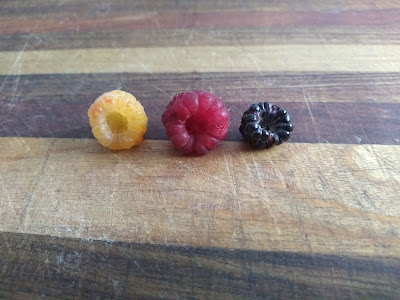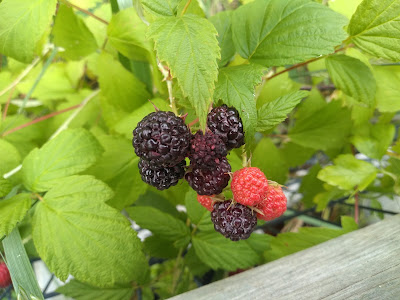I grow a few different maidenhair ferns, they are lovely ferns and I really like them. Each type that I grow are noticeably different.
I sell a few maidenhair ferns each year, and hope they the buyer looks after them. Sadly, most people think of maidenhair ferns (or any potted plants) like a bunch of flowers: they look great when they buy it and they expect to throw it away after a time. I am happy to say that these ferns will live for decades if cared for.
Maidenhair ferns are relatively simple to grow. I don't mist them or have them under grow lights or make any attempt to control humidity or have a terrarium or anything like that. I grow some outside under shelter, some in my unheated greenhouse, and some on the bookshelf in the house. I wrote a previous blog post describing how I grow maidenhair ferns.
I really like my maiden hair ferns so thought I would make a blog post showing a comparison of the different types I currently grow. Please note I am not a fern collector, there are many more varieties (as many other species) of maidenhair that exist.
 |
| Variegated maidenhair pinnules are each unique |
Office fern: Adiantum raddianum. Originally from South America, these are commonly sold in garden shops. I call it my office fern because it lived on the deak at my office for the first four years that I had it. People often complain that they had one but killed it because they treated it like a cactus instead of a fern. It grows long, arching, delicate looking fronds on surprisingly thin black stems. This fern can get rather dense and vibrant if looked after. I have had the fern below for almost eight years and it is thriving. The largest fronds usually reach a little over 50cm long, which is about as big as this one will grow in a pot this size.
 |
| Maidenhair fern - almost eight years old |
Chunky maidenhair: probably Adiantum raddianum, but I am not certain. I was told this is 'Lady Moxon', after growing it for a few years I am pretty sure that it is not Lady Moxon. It is quite different to my office fern and produces chunky and compact fronds. The fronds are slightly contorted and twisted, and the pinnules are clumped much closer together than they typical maidenhair ferns. The stem of each frond is much thicker than normal maidenhair ferns. I have not grown this as many years as my office fern so it is not as large, and I don't yet know how large it can become. While it is staying comparatively compact, it seems to be getting longer and chunkier fronds each year. When I first got this, due to its shape it almost looked similar to a bonsai tree.
 |
| Chunky maidenhair fern |
 |
| Chunky maidenhair fern |
 |
| Chunky maidenhair frond |
 |
| Variegated maidenhair vs chunky |
Variegated maidenhair fern: Adiantum raddianum 'Variegata'. The elusive and rare variegated maidenhair fern. Fronds are green splashed with white and produced on thin black stems. I think there are a few versions of this, but on mine the fronds tend to divide towards the tips. This is never as large as my office fern, the largest fronds reaching about 40cm long. My photos never do justice to this incredible fern, it is a delightful and graceful and captivates with its delicate fronds and striking variegation.
 |
| Variegated Maidenhair Fern |
 |
| Variegated maidenhair frond |
Native maidenhair fern: this is one of Australia's 8 native species, most likely Adiantum aethiopicum but it could be Adiantum capillus-veneris, I really need a fern expert to positively identify it for me one day. This species is native to Australia, and native to my location. The pinnules are a different shape to my office fern, and the sporangium are also a different shape. It is hardier, and survives light frosts and drying out much better than the South American A raddianum. This sends out runners under the soil, and survives a far wider range of conditions. This species never gets as dense and full looking as the South American species.
 |
| Australian native maidenhair fern |
This is by no means an exhaustive list of maidenhair fern varieties, it is just the varieties I am currently growing. There are a few other varieties I would like to get some day, but that may or may not ever happen.
I do sell maidenhair ferns from time to time. When I have a few for sale I list them on my for sale page. That page has my contact details, so if you are after one of my ferns send me an email and I will let you know if I have any for sale. If you have any interesting varieties of maidenhair fern let me know, I would love to learn more.











































